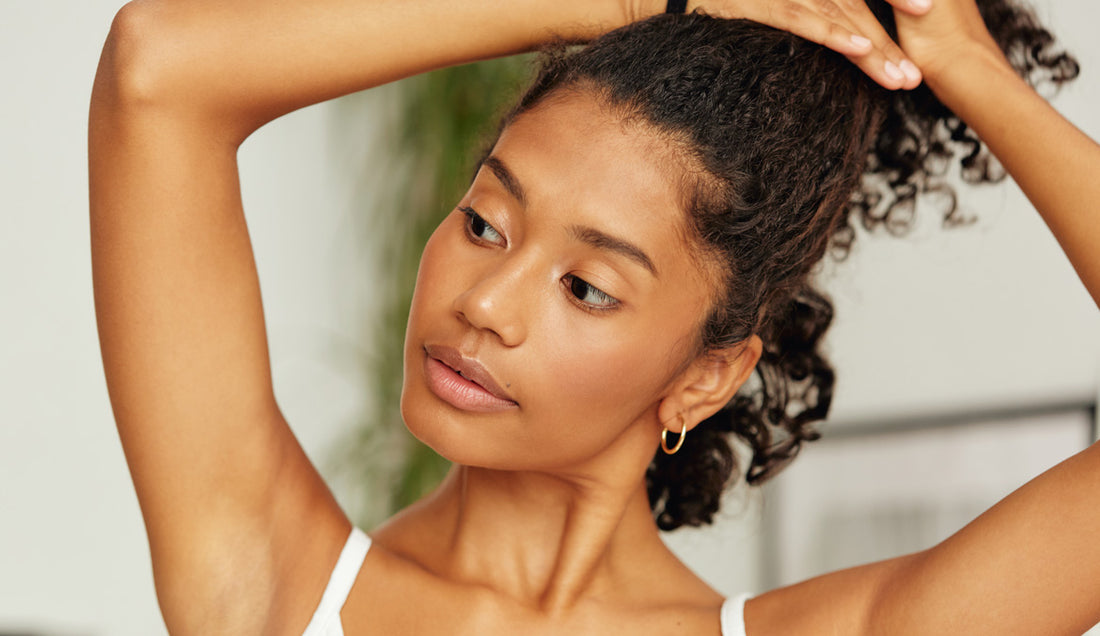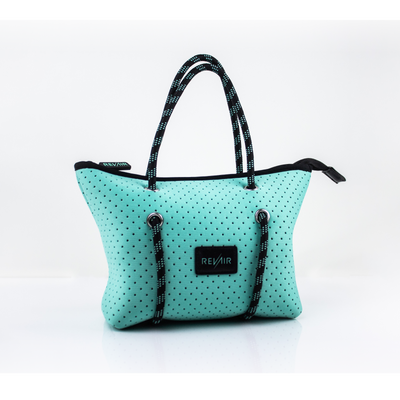
Protective Styles: What Not To Do

We love protective styles at RevAir! These faux locks are great for creating versatility in your routine, the best supporters of natural hair growth, and low maintenance -- so long as you follow a few simple rules.
No one is perfect when it comes to taking care of their hair - we learn as we go! Most first-time protective style wearers jump right into the trend without ever considering a few simple and easy guidelines that will make your faux locks last longer, stay as beautiful as the day they were styled, and dazzle day in and day out.
Learn more about what NOT to do when wearing a protective style and what you can do instead.
Do NOT DIY Your Braids, Locs, or Rows (If You Don't Know What You're Doing)
DIY protective styling rarely goes well, even for seasoned wearers. There are a few problems with installing a protective style yourself. First and foremost, if a style is too tight or too heavy -- or if your hair is already compromised -- the weight can cause breakage and hair loss. This is the number one reason why it's important to have your hair done by a professional who is trained in styling textured hair. A stylist can assess your hair prior to installing a protective style and ensure your style truly protects your natural hair rather than causing further damage.
In addition, it's notoriously difficult to style your own head of hair, even if you have a helper. Getting the right angle, securing each strand, and making sure the overall look is on point is best left to the professionals. This applies to out-of-the-box wigs as well that often look fake and aren't properly placed on your hairline.
DO Book a Hair Appointment at Your Favorite Salon
When your protective style starts off on the right track (no pun intended), your hair will last longer, be better blended, and protect your natural hair from damage. If this is your first time rocking a protective style, don't be afraid to look up reviews prior to visiting and ask your stylist if he or she is experienced in protective styles for your hair type.
Do NOT Use Non-Water Based Hair Products on Protective Styles
If there's one rule to live by when it comes to maintaining your protective style at home, it's never, ever using non-water-based hair products. Protective styles are known to be low maintenance. Embrace a more laid-back lifestyle by using simple, nourishing ingredients instead of heavy hair products. The problem with non-water-based ingredients commonly found in gels, serums, oils, shampoos, and conditioners is that they weigh down your hair, leaving behind build-up and contributing to breakage of your natural hair.
If you want to avoid cakey and flakey locks, only use water-based products that are free of harsh, drying additives like alcohol, sulfates, parabens, and artificial fragrances. Oils are good to use, too! Naturally beautiful hair means naturally nourishing products!
What You CAN Use Instead
Cleaning protective styles is best done with mild, gentle shampoos and conditioners designed for textured hair. Look for moisturizing products that feature coconut or argan oil, hair-friendly fragrances like natural botanicals that won't irritate your scalp, and water-soluble ingredients. For clarifying your scalp, a simple spritz bottle of witch hazel, tea tree, and lavender essential oil are often enough to protect your scalp without causing caking or flaking.
Do NOT Let Static Get the Better of Your Hair
Failing to wrap your hair at night is one of the biggest culprits behind frizz and flyaways. Although protective styles are faux hair, you still need to treat them as if they were your natural hair. In fact, protective styles attract more lint and debris than natural hair at times. You don't want to wake up with bed head all because you forgot to protect your lovely extensions.
DO Wrap Your Protective Style at Night
Silk scarves work best, but if you really want to go all out with protecting your extensions, invest in no-static, silk pillowcases and sheets too. Your hair will thank you for the extra beauty rest.
Do NOT Touch
We know you love your new protective style. In fact, many first-time protective style wearers can't keep their hands off it! Unfortunately, constantly touching your hair can damage the style over time -- and damage the natural hair underneath. There's no need to put your hair into a different style every day. Give your hair and your home-style routine a much-needed rest.
DO Have a Few Go-To Styles
Embrace gentle styles when it's time for a new look. Think loose buns, ponytails, space buns, and updos. These go-to styles can give your look a revival without excessive tugging and pulling on your delicate locks.
Do NOT Neglect Edge Control
A protective style does not mean you get to neglect edge control. Those wispy strands at the perimeter of your hair will grow quickly if you let them. Failing to continue upkeep on their hair is one of the biggest mistakes first-time protective style wearers can make. Again, these extensions may be faux hair, but they still need to be treated as if they've grown out of your own head. Don't ignore upkeep or go too long between salon sessions when it comes to maintaining a protective hairstyle. This is especially important for Type 4 that tends to grow in very textured and must be matched to the style of your faux locks.

DO Get on a Maintenance Schedule
Book a standing appointment at your salon to keep your protective style looking fresh and fly-away-free. Your stylist knows your hair best and can restore your protective style to its former glory in a matter of minutes. Keeping a running appointment on your calendar is a good reminder not to forget about maintaining your lovely locks.
You can support protective style maintenance at home too by using the best edge control products for your hair type. Style your baby hairs with gentle oil treatments and gels between salon appointments.
Do NOT Leave Your Protective Style in Too Long
While we're on the topic of routine salon visits, leaving protective styles in for too long is a common mistake among even the best beauty gurus. They're so low maintenance that it's easy to forget that even the perfect hairstyle doesn't last forever. When it comes to keeping your hair radiant, healthy, and fresh, it's important to change out your faux locks in a timely manner.
Most importantly, stay away from those "hair hacks" to make your protective style last longer. Many well-meaning fashionistas get by with "rigging it" or re-doing braids and twists to incorporate new hair growth. This is never a good idea for your natural hair as the added stress can cause breakage and eventual hair loss. When a style is done, it's best to channel our inner Disney princess and let it go.
DO Take Out Your Protective Style Every 6-8 Weeks
Most stylists agree that 6-8 weeks is the sweet spot for keeping protective styles fresh. Although some curly haired will leave their extensions in for longer (~12 weeks), a considerable amount of build-up can be expected after the 8-week mark. The best option is to avoid flaking by keeping your hair on a tight schedule.
Do NOT Repeat Styles
It may be tempting to want the exact same look once you've taken a protective style out, but the scalp tensions and strain on your hair is a no-go for natural hair beauties. Repeating the same style over and over again is like having your hair trapped in a tight ponytail for months at a time. Eventually, your natural locks will start to get a bit uncomfortable.
DO Mix It Up
Try a variety of styles at each appointment! For example, if you love twists, ask your stylist what similar protective styles you could rock on your next visit. Alternatively, consider opting for a wig at your next visit instead of extensions.
Do NOT Wash the Hair Itself
Avoid washing the hair itself as much as possible. While you may be able to get away with this if you have cornrows under a wig, twists and locs are a bit less forgiving. These styles tend to frizz when they come into contact with water. Take care to avoid over-washing your hair while maintaining your protective style and avoid touching the hair itself as much as possible.
DO Cleanse Your Scalp
Washing your scalp is a must with protective styles. Massage your scalp and implement oil treatments to your styling routine. This will keep blood circulation flowing, which in turn promotes the growth of new, healthy hair. In addition, a good scalp clarifying routine can prevent build-up and flaking, as well as bacterial growth.
When it comes to your curls, get to know your new BFF; mousse. Keeping mousse on hand will help you transition to washing your hair less and spending more time enjoying your protective style.
Curious about how you can implement a healthy hair routine for your curl type or want to learn about how protective styles can be used with RevAir? Reach out to our experts for all of your style needs!















